
Custard apple is a common name for several fruits and may refer to Annonaceae, the custard apple family, which includes the following species referred to as custard apples:

Leaf celery, also called Chinese celery or Nan Ling celery, is a variety of celery cultivated in East Asian countries for its edible, flavorful stalks and leaves.
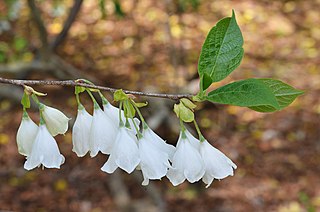
Halesia tetraptera, commonly known as the common silverbell or mountain silverbell, is a species in the family Styracaceae, native to the southeastern United States. It is cultivated as an ornamental tree.

Opuntia engelmannii is a prickly pear common across the south-central and Southwestern United States and northern Mexico. It goes by a variety of common names, including desert prickly pear, discus prickly pear, Engelmann's prickly pear in the US, and nopal, abrojo, joconostle, and vela de coyote in Mexico.
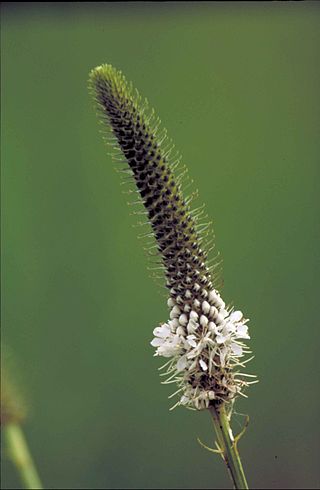
Dalea is a genus of flowering plants in the legume family, Fabaceae. Members of the genus are commonly known as prairie clover or indigo bush. Its name honors English apothecary Samuel Dale (1659–1739). They are native to the Western hemisphere, where they are distributed from Canada to Argentina. Nearly half of the known species are endemic to Mexico. Two species of Dalea have been considered for rangeland restoration.

Thermopsis is a genus of legumes, native to temperate North America and east Asia. They are herbaceous perennials and are known as goldenbanners or false-lupines.
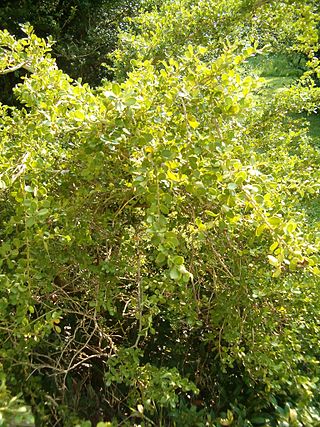
Buxus microphylla, the Japanese box or littleleaf box, is a species of flowering plant in the box family found in Japan and Taiwan. It is a dwarf evergreen shrub or small tree growing to 1 m (3.3 ft) tall and wide.

Vaccinium ovalifolium is a plant in the heath family with three varieties, all of which grow in northerly regions.

Sagittaria montevidensis is a species of flowering plant in the water-plantain family Alismataceae. Common names include giant arrowhead and California arrowhead.

Bothriochloa ischaemum is a species of perennial grass in the family Poaceae, found throughout much of the world. It is commonly known as yellow bluestem. Two varieties are recognized, of which Bothriochloa ischaemum var. ischaemum is native to Europe, Asia, and Africa and naturalized elsewhere, and var. songarica is native to Asia and naturalized elsewhere. Var. songarica is an invasive weed in Texas, where it is known as "King Ranch bluestem"; it has displaced native grasses in large areas of central and south Texas.

Chamaecrista glandulosa is a species of flowering plant in the legume family native to the Americas. Its distribution extends from Mexico to Brazil and it occurs on many Caribbean islands.

Wedelia acapulcensis, commonly known as Acapulco wedelia, is a species of flowering plant in the family Asteraceae. It is native to Texas in the United States, Mexico, and Central America.

Lilaeopsis schaffneriana is a rare species of flowering plant in the family Apiaceae known by the common names Schaffner's grasswort and cienega false rush.
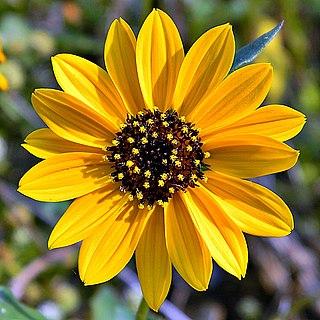
Helianthus debilis is a species of sunflower known by the common names cucumberleaf sunflower, beach sunflower, weak sunflower, and East Coast dune sunflower. It is native to the United States, where it can be found along the Atlantic and Gulf Coasts. It is known elsewhere as an introduced species, such as South Africa, Australia, Taiwan, Slovakia, and Cuba.

Blitum is a genus of flowering plants in the amaranth family Amaranthaceae, subfamily Chenopodioideae. It is closely related to genus Spinacia. Its 12 species were traditionally placed in the genera Chenopodium, Monolepis, or Scleroblitum. The species of genus Blitum occur in Asia, Europe, North Africa, the Americas, and Australia.
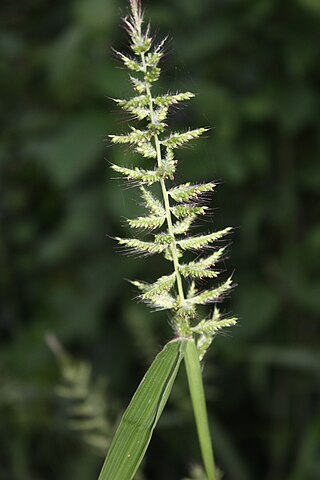
Setaria barbata, with common names bristly foxtail grass, corn grass, Mary grass, and East Indian bristlegrass, is a species of grass in the family Poaceae native to tropical Africa and tropical Asia.

Adiantum tenerum, common name brittle maidenhair fern, is a species of maidenhair fern belonging to the family Pteridaceae.
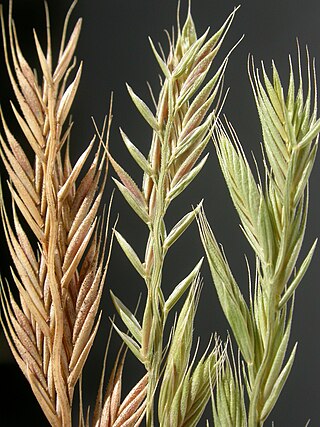
Festuca octoflora, also known as Vulpia octoflora, is an annual plant in the grass family (Poaceae). The common name six week fescue is because it supplies about 6 weeks of cattle forage after a rain. Other common names include sixweeks fescue, six-weeks fescue, pullout grass, eight-flower sixweeks grass, or eight-flowered fescue.


















